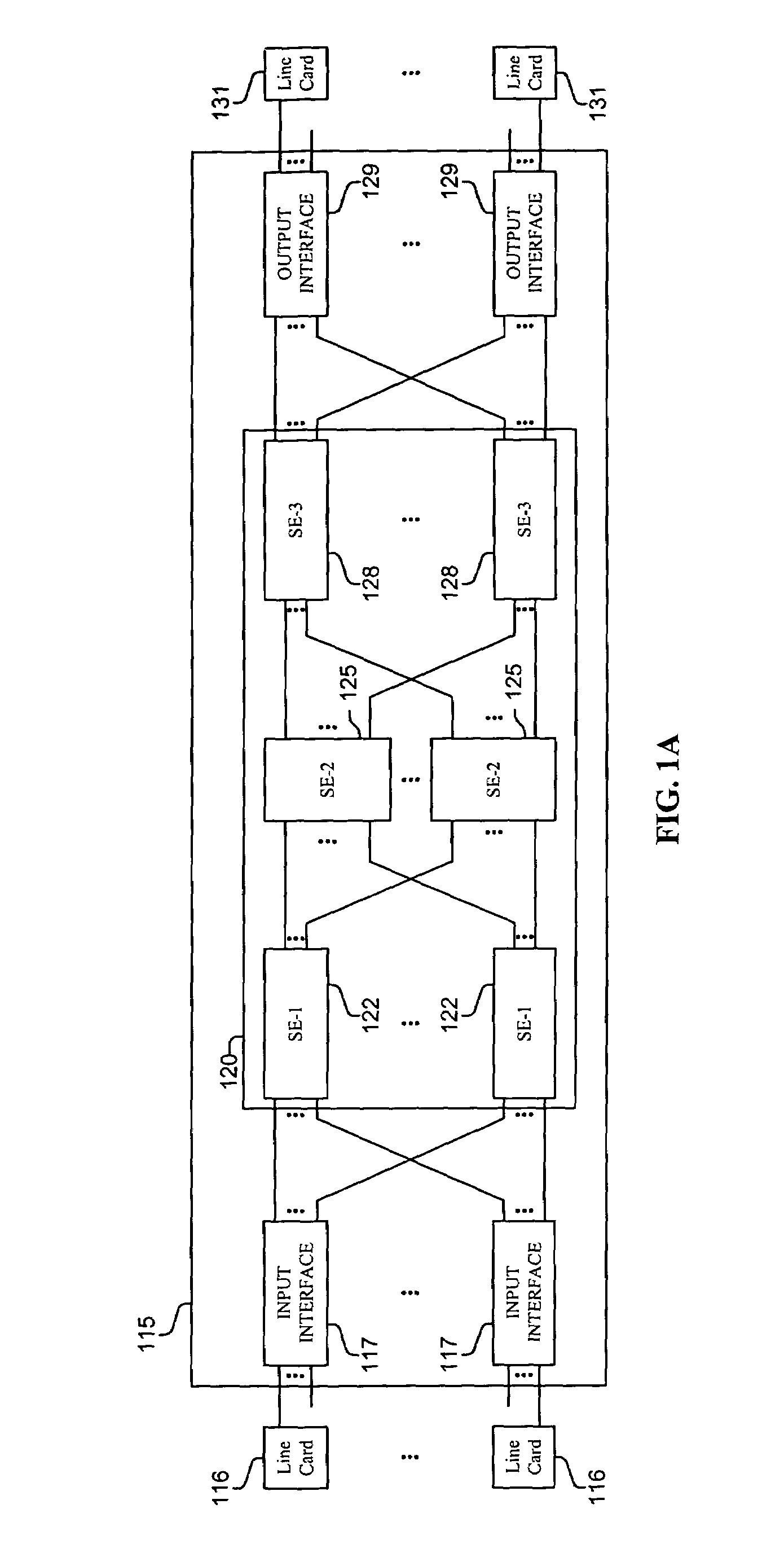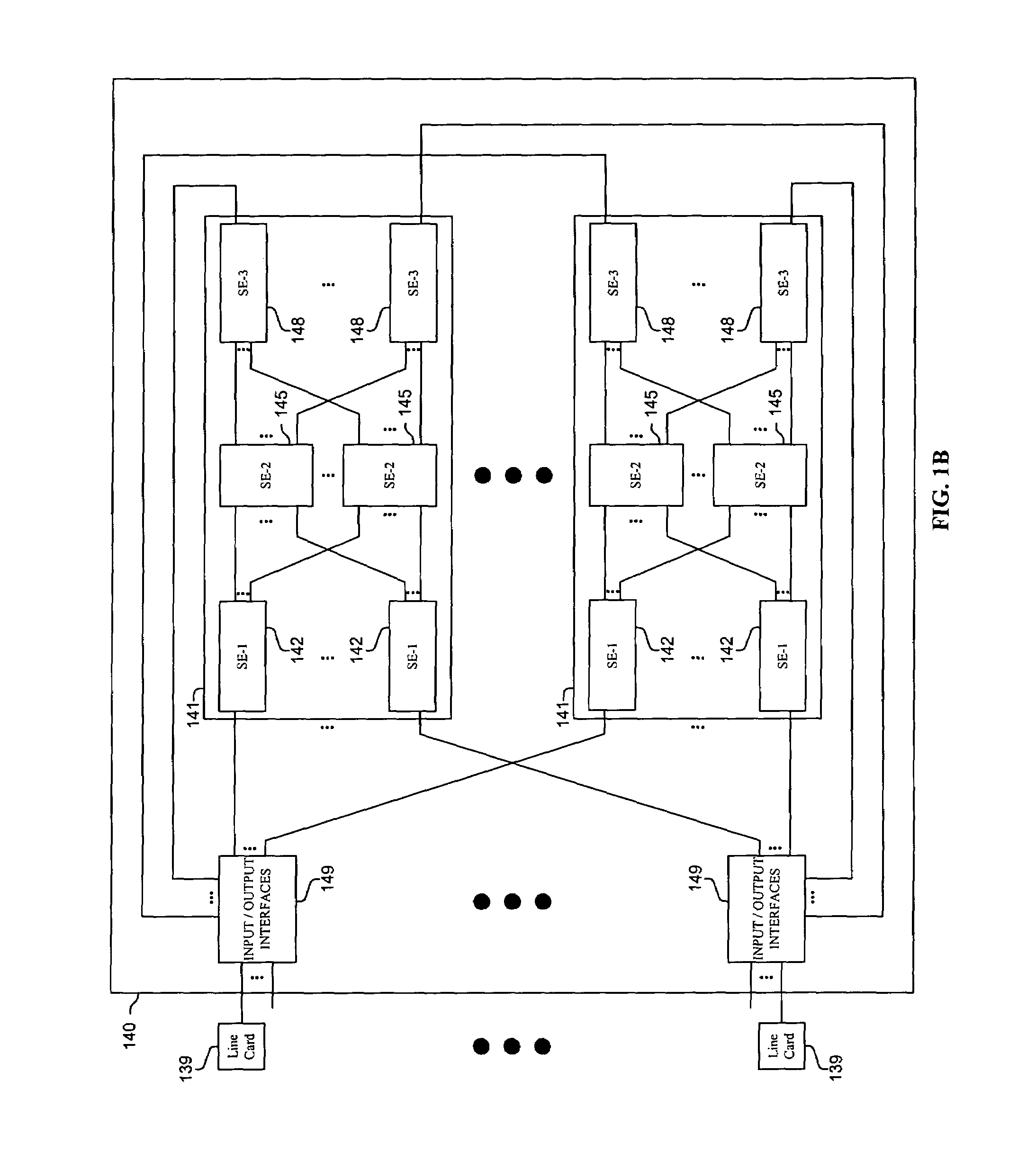Method and apparatus for using barrier phases to limit packet disorder in a packet switching system
a packet switching and barrier phase technology, applied in data switching networks, frequency-division multiplexes, instruments, etc., can solve problems such as complex techniques, large buffers and sequence number counters, and large resources for buffers and sequence numbers
- Summary
- Abstract
- Description
- Claims
- Application Information
AI Technical Summary
Benefits of technology
Problems solved by technology
Method used
Image
Examples
Embodiment Construction
[0018]Methods and apparatus are disclosed for using barrier phases to limit the disorder of packets which may be used, inter alia, in a computer or communications system, such as a packet switching system, router, or other device. Such methods and apparatus are not limited to a single computer or communications system. Rather, the architecture and functionality taught herein are extensible to an unlimited number of computer and communications systems, devices and embodiments in keeping with the scope and spirit of the invention. Embodiments described herein include various elements and limitations, with no one element or limitation contemplated as being a critical element or limitation. Each of the claims individually recite an aspect of the invention in its entirety. Moreover, some embodiments described may include, but are not limited to, inter alia, systems, integrated circuit chips, embedded processors, ASICs, methods, and computer-readable medium containing instructions. The em...
PUM
 Login to View More
Login to View More Abstract
Description
Claims
Application Information
 Login to View More
Login to View More - R&D
- Intellectual Property
- Life Sciences
- Materials
- Tech Scout
- Unparalleled Data Quality
- Higher Quality Content
- 60% Fewer Hallucinations
Browse by: Latest US Patents, China's latest patents, Technical Efficacy Thesaurus, Application Domain, Technology Topic, Popular Technical Reports.
© 2025 PatSnap. All rights reserved.Legal|Privacy policy|Modern Slavery Act Transparency Statement|Sitemap|About US| Contact US: help@patsnap.com



